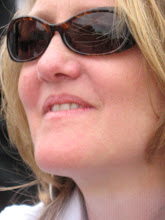
Charles-Marie de La Condamine, adventurer, geographer, and mathematician, made it back to France in 1745 a hero. After ten years spent proving the earth's shape, he then set off to chart the 3000-mile course of the Amazon River from the Andes to the Atlantic, something no European had ever done before.
 Pierre Bouguer, who signed on as the mission’s astronomer (he had been a child prodigy in math, famous for making celestial observations at sea) returned to France at the expedition’s end. He remained a productive scientist until his death at the age of 60, in 1758. Among his achievements were the invention of the heliometer, used for measuring the diameters of planets, as well as his studies of the properties of light, which earned him posthumous recognition as “the father of photometry”.
Pierre Bouguer, who signed on as the mission’s astronomer (he had been a child prodigy in math, famous for making celestial observations at sea) returned to France at the expedition’s end. He remained a productive scientist until his death at the age of 60, in 1758. Among his achievements were the invention of the heliometer, used for measuring the diameters of planets, as well as his studies of the properties of light, which earned him posthumous recognition as “the father of photometry”. Jean Verguin, a naval engineer and draftsman whose job was to draw the expedition’s maps, enjoyed a prosperous career upon his return to France and lived a long, healthy life.
But not all their stories had happy endings.
Three of the expedition's members died in South America: Couplet, one of two assistants charged with advanced mapping and identification of the best geographical locations for each new research point, died from fever. Surprisingly, he was the only one to succumb as fever constantly preyed on the French scientists. Morainville, an engineer who built the observatories needed for the team’s celestial measurements, suffered a fatal injury after falling from a scaffold. The expedition surgeon, Senièrgues, whose job was to tend to the medical needs of the expedition members, was attacked and killed by a mob, angry at the way the Frenchman openly flirted with their women.
Hugo, the watchmaker responsible for the care and maintenance of the scientific instruments, simply disappeared.
Joseph de Jussieu, the expedition’s botanist whose story is recounted here, would take 36 years to return to France, and not by choice. At times his skills were considered so valuable that he was forbidden to depart by the local authorities, such as when he was made to care for the sick during a 1745 outbreak of smallpox. At other times he was ready to leave, but prevented in other ways, like when a 1746 tidal wave destroyed the port from which he was set to sail. Eventually, in 1771, he returned to Paris, a frail and broken man. His mind was shattered, his body would soon follow. Eight years later, he died, at the age of 74, eulogized as a “martyr to science”.
 Louis Godin, mathematician, astronomer, and nominal leader of the expedition, was forced, like de Jussieu, to stay in Peru. He remained for 16 years under orders of the government, returning to his wife and two children only in 1751. He was never the same. In 1760, at the age of 56, he died from an attack of apoplexy.
Louis Godin, mathematician, astronomer, and nominal leader of the expedition, was forced, like de Jussieu, to stay in Peru. He remained for 16 years under orders of the government, returning to his wife and two children only in 1751. He was never the same. In 1760, at the age of 56, he died from an attack of apoplexy.
And then there is the story of Louis' nephew, Jean Godin, who joined the expedition as an ambitious youth with a desire for adventure. His twenty-year separation from his Peruvian wife is one of the most tragic and romantic tales the world has ever known.
Hugo, the watchmaker responsible for the care and maintenance of the scientific instruments, simply disappeared.
Joseph de Jussieu, the expedition’s botanist whose story is recounted here, would take 36 years to return to France, and not by choice. At times his skills were considered so valuable that he was forbidden to depart by the local authorities, such as when he was made to care for the sick during a 1745 outbreak of smallpox. At other times he was ready to leave, but prevented in other ways, like when a 1746 tidal wave destroyed the port from which he was set to sail. Eventually, in 1771, he returned to Paris, a frail and broken man. His mind was shattered, his body would soon follow. Eight years later, he died, at the age of 74, eulogized as a “martyr to science”.
 Louis Godin, mathematician, astronomer, and nominal leader of the expedition, was forced, like de Jussieu, to stay in Peru. He remained for 16 years under orders of the government, returning to his wife and two children only in 1751. He was never the same. In 1760, at the age of 56, he died from an attack of apoplexy.
Louis Godin, mathematician, astronomer, and nominal leader of the expedition, was forced, like de Jussieu, to stay in Peru. He remained for 16 years under orders of the government, returning to his wife and two children only in 1751. He was never the same. In 1760, at the age of 56, he died from an attack of apoplexy.And then there is the story of Louis' nephew, Jean Godin, who joined the expedition as an ambitious youth with a desire for adventure. His twenty-year separation from his Peruvian wife is one of the most tragic and romantic tales the world has ever known.
You can read about the story of the assistant mapmaker and his devoted bride in The Mapmaker's Wife, by Robert Whitaker.
Images:
Portraits of Pierre Bouguer and Louis Godin, courtesy of Wikimedia Commons.

No comments:
Post a Comment